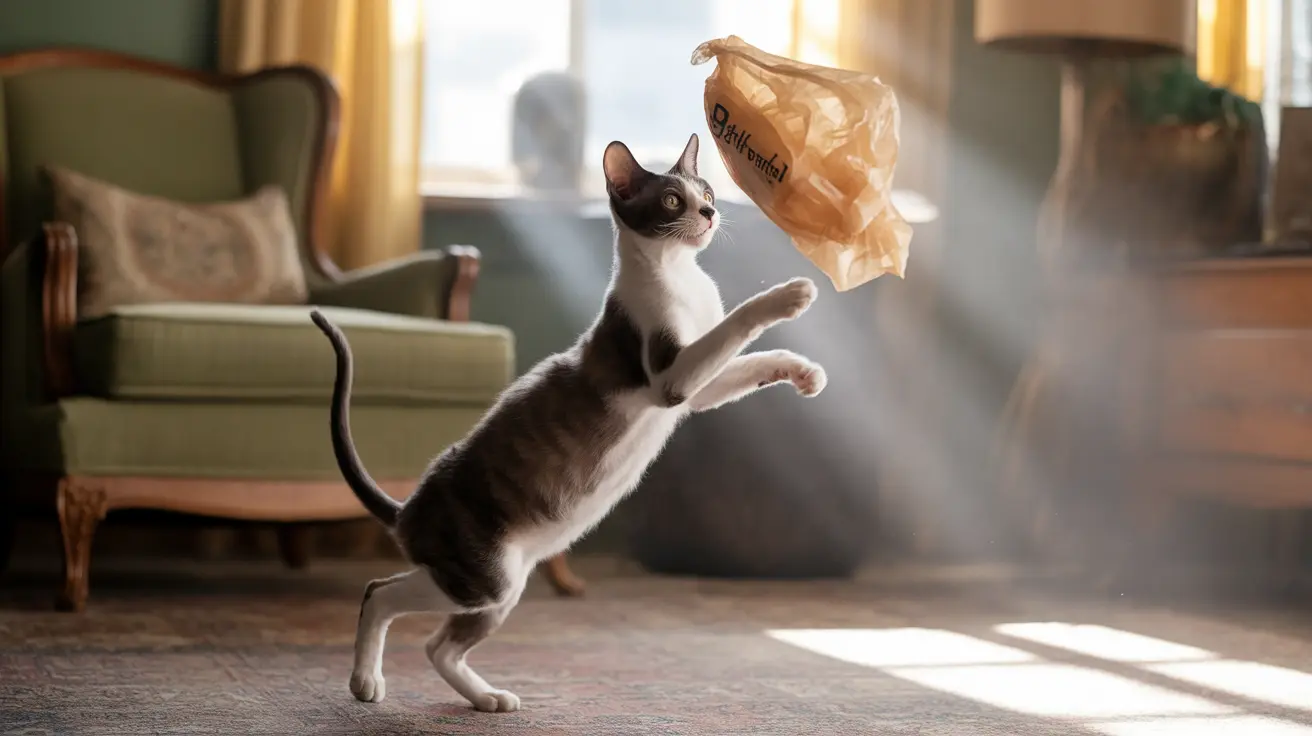Finding out your cat has eaten plastic can be a frightening experience for any pet owner. Whether it's a plastic bag, wrapper, or toy, plastic ingestion poses serious health risks to cats and requires immediate attention. Understanding the dangers, recognizing symptoms, and knowing how to respond can make all the difference in protecting your feline friend.
Why Do Cats Eat Plastic?
Cats may be drawn to plastic items for several reasons. Some are attracted to the crinkly texture or sounds that plastic makes, while others might be experiencing pica, a condition that causes them to eat non-food items. Environmental factors like stress, boredom, or nutritional deficiencies can also trigger this behavior.
Common Triggers for Plastic Consumption
- Curiosity and playful behavior
- Pica disorder
- Stress or anxiety
- Food residue on plastic items
- Underlying medical conditions
- Lack of environmental enrichment
Immediate Dangers of Plastic Ingestion
When a cat ingests plastic, several immediate risks can arise. The most urgent concerns include choking hazards, intestinal blockages, and potential damage to the digestive tract. Sharp edges can cause cuts or tears in the mouth, throat, or intestines, leading to serious complications.
Warning Signs to Watch For
Keep an eye out for these symptoms that may indicate your cat has eaten plastic:
- Vomiting or repeated attempts to vomit
- Lethargy and loss of appetite
- Difficulty defecating or straining
- Abdominal pain or swelling
- Changes in behavior or vocalization
- Drooling or pawing at the mouth
Emergency Response Steps
If you suspect your cat has eaten plastic, take these immediate actions:
- Remove any remaining plastic from your cat's reach
- Check their mouth carefully if safe to do so
- Monitor their behavior and symptoms
- Contact your veterinarian immediately
- Preserve any evidence of the ingested item
Prevention Strategies
Taking proactive steps to prevent plastic ingestion is crucial for your cat's safety:
Environmental Management
- Store plastic bags and wrapping materials securely
- Use covered trash bins
- Regular house inspection for hazardous items
- Proper disposal of plastic packaging
Behavioral Solutions
- Provide appropriate toys and enrichment
- Increase playtime and attention
- Address underlying stress or anxiety
- Consider puzzle feeders and interactive toys
Frequently Asked Questions
What are the risks if my cat eats plastic, and how can I tell if it has consumed any?
The main risks include choking, intestinal blockage, and internal injuries. Signs include vomiting, lethargy, loss of appetite, and difficulty defecating. Watch for behavioral changes and any pieces of missing plastic in your home.
Why do cats eat plastic, and how can I prevent this behavior in my pet?
Cats may eat plastic due to curiosity, pica disorder, stress, or underlying medical conditions. Prevention involves removing access to plastic items, providing appropriate toys and enrichment, and addressing any medical or behavioral issues with your veterinarian.
What are the symptoms of plastic ingestion in cats, and when should I seek veterinary help?
Symptoms include vomiting, lethargy, decreased appetite, abdominal pain, and changes in bathroom habits. Seek immediate veterinary care if you know or suspect your cat has ingested plastic, as early intervention is crucial.
How can I prevent my cat from eating plastic items around the house?
Store plastic items securely, use covered trash bins, provide appropriate toys for enrichment, and maintain a clean environment. Regular play sessions and environmental enrichment can help reduce destructive behaviors.
What should I do immediately if I suspect my cat has swallowed a piece of plastic?
Contact your veterinarian immediately, monitor your cat closely for symptoms, and preserve any evidence of the ingested item. Do not attempt to induce vomiting without veterinary guidance, as this could cause additional harm.
Conclusion
While plastic ingestion in cats is a serious concern, prompt recognition and response can prevent severe complications. By understanding the risks, implementing prevention strategies, and knowing when to seek veterinary care, you can better protect your cat from this common household hazard. Remember that prevention is always better than treatment, so take steps to create a safe environment for your feline companion.






